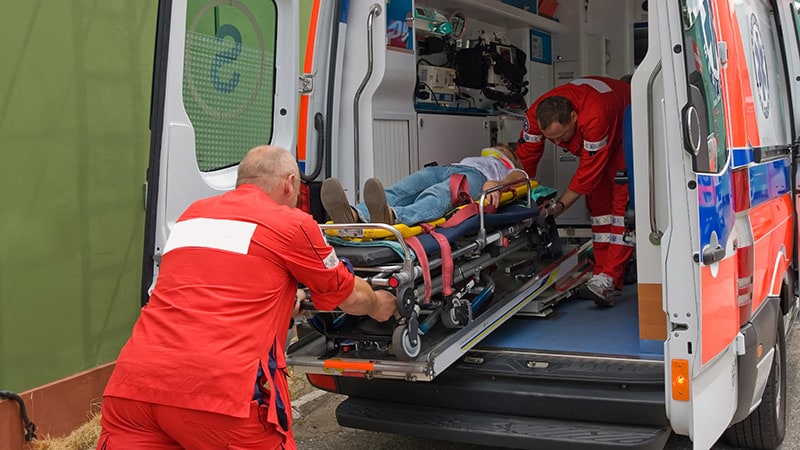Guideline name: Stroke and transient ischaemic attack in over 16s: diagnosis and initial management [NG128]
Update type: Replaces previous guidance CG68 (July 2008)
Published: May 2019
Takeaway
- NICE has issued a guideline focusing on the interventions for the acute stage of a stroke or transient ischaemic attack (TIA).
- It is crucial that patients receive appropriate diagnosis and acute management of stroke and TIA within 48 hours after onset of symptoms.
Recognising symptoms of stroke or TIA
- Use a validated tool, such as FAST (Face Arm Speech Test) to screen people with suspected stroke or TIA in non-hospital settings.
- Rule out hypoglycaemia in individuals with sudden onset of neurological symptoms.
Initial management of suspected and confirmed TIA
- Initiate aspirin (300 mg daily) in individuals with suspected TIA, unless contraindicated.
- Individuals with suspected TIA should be referred for specialist assessment within 24 hours of symptom onset.
- Do not use scoring systems, such as ABCD2, to assess the risk of subsequent stroke or to inform urgency of referral for people who have had a suspected or confirmed TIA.
- Offer secondary prevention in addition to aspirin as soon as possible after the diagnosis of TIA.
Imaging
- CT is not recommended in case of suspected TIA unless there is a suspicion of an alternative diagnosis detectable by CT.
- Following specialist assessment, consider MRI (typically on the same day) to determine the region of ischaemia, presence of haemorrhage or alternative pathologies.
Specialist care for acute stroke
- All individuals with suspected stroke should be admitted directly to a specialist acute stroke unit after initial assessment in any clinical settings.
- Perform brain imaging promptly with a non-enhanced CT for individuals with suspected acute stroke if any of the following apply:
- Indications for thrombolysis or thrombectomy
- Receiving anticoagulant treatment
- Known bleeding tendency
- Depressed level of consciousness (Glasgow Coma Score <13)
- Unexplained progressive or fluctuating symptoms
- Papilloedema, neck stiffness or fever
- Severe headache at onset of stroke symptoms.
- Perform scanning at the earliest and within 24 hours of symptom onset in everyone with suspected acute stroke without indications for immediate brain imaging.
Pharmacological treatments
Thrombolysis
- Thrombolyse with alteplase within 4.5 hours of onset of stroke symptoms after intracranial haemorrhage has been excluded on imaging.
- Ensure that healthcare staff administering thrombolysis are trained and all protocols for intravenous thrombolysis, including management of post-thrombolysis complications are followed.
Aspirin, anticoagulant and statin therapy
- For patients with acute stroke (intracerebral haemorrhage ruled out), aspirin 300 mg at the earliest but certainly within 24 hours. Oral administration is preferred in the absence of dysphagia, while administration though rectal route or by enteral tube is preferred in the presence of dysphagia.
- Continue aspirin daily 300 mg for 2 weeks, followed by long-term antithrombotic treatment
- Add a proton pump inhibitor if there is a history of aspirin-associated dyspepsia.
- Consider an alternative antiplatelet agent in case of allergy or intolerance to aspirin.
- Routine anticoagulation is not recommended for the treatment of acute stroke. Presence of other comorbidities may require anticoagulants.
- Anticoagulation should be reversed in with primary intracerebral haemorrhage who were receiving warfarin before the event. A combination of prothrombin complex concentrate and intravenous vitamin K should be used for reversal.
- Statin therapy should be started immediately in people with acute stroke. Therapy should be continued in those already taking statins before the stroke.
Nutrition, hydration, and mobilisation
- A specialist assessment of swallowing function is necessary to avoid the risk of aspiration pneumonia.
- Screen inpatients for malnutrition, which includes assessment of body mass index (BMI) and percentage unintentional weight loss.
- Initiate nutrition support for individuals with stroke at risk of malnutrition. Routine nutritional supplementation is not necessary if the individual is adequately nourished on admission.
- Assess the hydration status of patients with acute stroke and review regularly.
- Early mobilisation should be a part of an active management programme in a specialist stroke unit.
This summary is reviewed by Prof. Rishabh Prasad MBBS, MA, MSC, FRCGP, FFCI, FRSA



